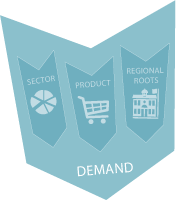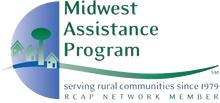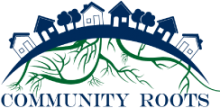It makes little sense to set up shop to make a product or provide a service that no one is buying or likely to buy. Yet a lot of effort in economic and community development is focused on producing more of what we already do or make in our region or attracting new industries—without finding out if that’s what buyers want now, or will want tomorrow.
WealthWorks action is built around a market opportunity where you can document demand. And you can document demand because you have established relationships with actual and potential buyers well before you put your development “spade” to the ground.
Of course, there are a lot of buyers out there buying a lot of goods and services. You can’t talk to all of them or research every product or service. So in WealthWorks, you start with what you know about your region to determine the buyers with whom you want to engage. By following one or more of three Scans for Demand, you can target the buyers you want to consult—both inside and outside the region—to find out what products or services they want and are willing to buy.
You might think of each of these scans as a set of conversations in which you are exploring. In fact, looking for market opportunities often sends you in a direction you never thought of before. So it is important to be curious and think outside the box. And none of these scans are mutually exclusive. In fact, one can often lead to another, and it’s quite useful to employ them all—in whatever order makes sense from your starting point—to connect with and better understand potential buyers and an initial set of market opportunities they might represent.

By following one or more of three Scans for Demand, you can target the buyers you want to consult—both inside and outside the region—to find out what products or services they want and are willing to buy.
To investigate demand that might lead to a promising market opportunity, you could start with what you know about existing or emerging sectors already in your region. Sectors have a wide range of players with whom you can connect to learn about growing or changing demand for specific products or services.
You may already be working with local community leaders and economic development practitioners to set goals for specific sectors in your economy. Your region might have a small but solid manufacturing sector that has some idle capacity and could use some more business. Perhaps you have a lot of parks and lakes, along with other attractions that could be appealing, but none are connected and all the “finding it” work is left to the tourists. Or your region might be weighing the risks of getting into a new sector, for example, transitioning a conventional construction industry toward green building. Maybe your region has some of the assets it takes to start producing one of the newer types of alternative energy, and some small early investments have even come in.
The challenge for you as an economic and community development practitioner is to identify a market opportunity that is right for your region.
Photo @copy 2013 Wayne Fawbus
To use a Sector Scan approach to discover demand, it means bringing together or talking to people who are in a handful of critical or emerging sectors in your region. For each sector, you want to begin by building a set of answers to this list of questions:
By asking and answering these questions, you can construct a manageable list of buyers inside and outside the region that are good targets to help you gauge demand and find a potential market opportunity in this sector. When you talk to them, you can ask a parallel set of questions focused on what they are buying or want to buy, and what else they care about. Patterns will likely emerge once you have met with multiple buyers—and they might surface one or more potential market opportunities worth exploring with others back in the region.
Photo ©Sustainable Agriculture Research & Education (SARE)
In some economic development efforts, exploring demand might start (or continue) by thinking about a particular product or service the region is producing or wants to produce. In this case as well, a similar set of unanswered questions about demand are useful to address: who will buy, how much, and with what qualities? So another viable path to learning about demand might be to focus on buyers of a particular product or service.
For example, recently a distressed region in the rural South determined that they wanted to begin to look for a market opportunity in the alternative energy sector. They discovered that the region already had much of what it took to produce biofuel—by using small-scale refineries, local waste oil and a new seed crop. They weren’t making or selling the product yet, but they knew from initial research and conversations that demand for biofuel was growing across the nation and the world.
But who would buy theirs if they produced it? With this “product” lens, they created a target list for buyer conversations by asking questions like these:
Just as with the Sector Scan, the Product Scan can produce a list of potential buyers with whom you can start a relationship by asking these questions and others. The patterns that emerge from conversations with buyers might confirm the market opportunity—or not. In fact, anyone who explores demand with the Product Scan has to be ready for the possibility that buyers may not want the product they hope to produce. But it sure is better to learn that at the front end of a development effort!
One more exploration avenue that might surface a market opportunity is to talk to regionally rooted buyers. Who might they be? They are institutions, organizations, agencies or business clusters that have roots firmly planted in your region. They might include universities, hospitals, prisons, schools or utility companies that are big buyers of goods and services. Or they could be groups of similar kinds of businesses—like a group of grocery stores located in your region associated with a particular national chain that do some bulk purchasing. Or, if you have a large regional medical center in the area, they might be all the doctors’ offices connected to it. Or you might think of all the municipal buyers of energy in your region. Or all the microbreweries, if that cluster is hopping where you live and work.
These regionally rooted buyers rarely, if ever, leave a community. Individually or collectively, they likely represent the largest local buyers of goods and services in your region. Because most (if not all) of them depend on the local economy doing well, they have a vested interest in local people, places and firms doing better.
To scan regionally rooted buyers, it means sitting down with various leaders or staff of these institutions or clusters and having conversations about what they are buying or would like to buy. Questions for them might start with:
Your role with regionally rooted buyers is to offer an open ear to what products or services, if available locally or better tailored, might meet their needs and preferences. Those are the potential market opportunities. For example, conversations with a cluster of artisanal beer producers in Asheville, North Carolina, might surface that many are seeking a local source for organic hops. In Santa Fe, many rug weavers might be looking for stronger specialty yarns. A regional hospital might be looking for a source of less expensive herbs to add flavor to their new nutrition-rich cafeteria menu. Production of herbs, specialty wool or organic hops, in these cases, could emerge as potential market opportunities.
When you talk with regionally rooted buyers, it can also help to learn about any products and services they are purchasing from outside your region. Might these products and services be located or produced closer to home? Perhaps they might prefer to buy from within the region if it satisfies their interests in another way—presenting yet another market opportunity.
If you are located in a highly productive agricultural area, for example, you might discover in talking with a local cluster of grocery stores, that they are buying almost all their produce from outsiders, who don’t always come through on their orders. Could a group of striving local farmers, working together, open a conversation with the grocery store buyers and start supplying those markets with some of that produce instead, reducing transportation costs for the buyers while helping improve some local livelihoods of the people who spend at the store? The in-region proximity of buyer and producer might offer better grounds for establishing and maintaining a relationship that could lead to future market opportunities.
In other words, explore all the possibilities with regionally rooted buyers, their current buying as well as product needs and gaps. Tapping into these—along with your shared interests in the region—can help you identify market opportunities that are “hidden-in-plain-sight.” These might provide both solid wealth-building potential and a stronger, more enduring base for a region’s economy.
Photo ©Dayna Cunningham for MIT Community Innovators Lab
In Cleveland a few years back, a collaborative formed that worked with a set of regional anchors—the Cleveland Clinic, Case Western Reserve University and University Hospitals—to determine what they bought in bulk that might be supplied by a network of worker-owned cooperatives setting up in the low-income neighborhood next door. Learning that the institutions purchased laundry services from a corporation owned outside the area, the collaborative recognized a market opportunity that might match with the resources and skills in the community.
The collaborative set to work with neighborhood groups, funders, and a range of technical assistance providers to establish a laundry service enterprise sited in the neighborhood, and owned by its employees. That Evergreen Cooperative Laundry now also supplies hotels and nursing homes, and employs neighborhood people who are earning above minimum wage and now have an ownership stake. This market opportunity has inspired the development of two other enterprises—Ohio Cooperative Solar and Green City Growers—with resident employee-owners.
For more, see evergreencooperatives.com
The best-kept secret about “getting to know demand” is that you do it by getting to know the demanders—that is, the people who are buying. Once you start talking, you open a relationship. That relationship can develop and keep the useful demand information coming. Building this relationship helps you stay informed about buyers’ changing needs and preferences over time, which helps safeguard your economic and community development effort.
Having a relationship with demand means you are on top of what your buyers want because you are in touch with them—and they are most likely in touch with their own customers. So, unless you are selling directly to consumers, your buyers are your best source of information on demand in ways that can give you leverage. For example, if you are selling wood products to the residential construction industry, your buyers know exactly what wood products their own customers—home builders and home owners— prefer these days. In other words, being in touch with your current and potential buyers keeps your ear closer to the consumer ground as well.
Demand is influenced by both your buyers’ needs and their customers’ preferences. Such preferences are shaped by culture, community and individual tastes. Because these vary widely by region, age groups and other characteristics, demand, too, varies widely. Preferences might relate to popular trends, cultural history or ethnicity, ethical values or how the economy is doing. For example, if you have been manufacturing dining room chairs for years, you might find demand changing because more people want chairs made with sustainably harvested timber, or handmade by local craftspeople, or that match a new Scandinavian design trend.
Consumer preferences can change quickly, and can sometimes be driven by savvy marketing. Well-developed and sustained relationships with demand—the people and firms who buy your region’s products or services—can help you navigate this complexity. By building relationships with buyers, you can ensure you pursue market opportunities that respond to actual demand.

Specialties: Local Food, Placemaking, Renewable Energy
States served: Minnesota
Additional details: Enhancing the vitality and quality of life in Cass, Crow Wing, Morrison, Todd and Wadena counties is the mission of Region Five Development Commission. Resiliency, inclusion and collaboration are guiding concepts in achieving mutually shared goals that continue to evolve with local municipalities, state, federal, philanthropic, non-profit and social advocacy agencies.
Contact: Cheryal Lee Hills, 218-894-3233
Mailing address:
200 1st Street NE, Suite 2
Staples, MN 56479
Alternative contact: Dawn Espe, 218-894-3233
Website: http://www.regionfive.org

Specialties: Food, Forestry/wood products, Tourism
States served: Idaho, Oregon, Washington
Additional details: RDI was formed in 1991 in response to the timber industry crisis facing the Pacific Northwest. Our nationally recognized programs and services help communities help themselves with effective and results-oriented training and resources necessary for individuals living in rural communities to build and sustain a better future in their communities. Our work is based upon our genuine commitment to build rural capacity through Leadership Development programs and strengthen Rural Economic Vitality through moving capacity into action.
Contact: Amy Hause, (541) 255-9590
Mailing address:
Rural Development Initiatives
91017 S Willamette St
Coburg, Oregon 97408
Alternative contact: Heidi Khokhar, (541) 684-9077 ext. 7011
Website: http://www.rdiinc.org/

Specialties: Food, Forestry/wood products, Housing, Tourism
States served: Alaska, Arizona, California, Colorado, Hawaii, Idaho, Montana, Nevada, New Mexico, Oregon, Utah, Washington, Wyoming
Region details: RCAC serves 13 western states including: Alaska, Arizona, California, Colorado, Hawaii, Idaho, Montana, Nevada, New Mexico, Oregon, Utah, Washington, and Wyoming. We also work in the U.S. territories of the Marianas Islands, Marshall Islands and the U.S. Virgin Islands.
Additional details: RCAC Value Chains, economic development and Wealth Works are embedded in RCAC’s Building Rural Economies program. With over 10 years of experience in these arenas we technically assist communities who wish to envision and create their future.
Contact:
Carol Cohen, 435-671-7068
Mailing address:
3120 Freeboard Drive
Suite 201
West Sacramento, CA 95691
Alternative contact: Ellen Drew, (575) 421-0261
Website: http://www.rcac.org/community-economic-development/wealthworks-west

Specialties: Energy efficiency
States served: Iowa, Kansas, Minnesota, Missouri, Montana, Nebraska, North Dakota, South Dakota, Wyoming
Additional details: Midwest Assistance Program (MAP) has been helping communities and tribal nations find solutions to their infrastructure and development needs through information, resource management, expertise, and technical assistance since 1979.
Contact: Chris Fierrros, 660-562-2575
Mailing address:
303 N Market Street, Suite 2
Maryville, MO 64468
Website: http://www.map-inc.org

Specialties: Bio-energy, Food
States served: Arkansas, Louisiana, Mississippi, Oklahoma, Tennessee, Texas
Region details: Communities Unlimited serves seven southern states: Arkansas, Mississippi, Tennessee. Texas, Oklahoma, Louisiana and Alabama. This is an area that includes 60% of this country’s persistently poor counties, including large percentages of African Americans, Hispanics, and Native Americans.
Additional details: Communities Unlimited has 40 years of community economic development experience in the South. It seeks to move rural and under-resourced places toward prosperity by identifying a community’s assets and the market demand for the products or services created from those. We then build value chain collaboratives based on WealthWorks principles to create new economic opportunities. Since 2013, we are demonstrating the success of this approach through a farm-to-fuel value chain in the Arkansas Delta.
Primary Contact:
Martha Claire Bullen, 479-443-2700
Alternative Contact:
Ines Polonius
Mailing address:
3 East Colt Square Drive
Fayetteville, AR 72703
Alternative contact: Debbie Luther, 870-509-1331
Website: https://www.communitiesu.org

Specialties: Arts, Food, Forestry/wood products, Tourism
States served: Connecticut, Maine, Massachusetts, New Hampshire, New York, Rhode Island, Vermont
Additional details: Community Roots, LLC is a Vermont firm specializing in rural community and economic development consulting. Melissa Levy of Community Roots, LLC has been working with the WealthWorks framework over the past several years. She’s been a trainer, coach, workshop facilitator, and presenter in the WealthWorks community.
Contact: Melissa Levy, 802-318-1720
Location: Hinesburg, VT

Specialties: Arts, Energy efficiency, Food, Forestry/wood products, Manufacturing, Tourism
States served: Kentucky, North Carolina, Ohio, Tennessee, Virginia, West Virginia
Additional details: The Central Appalachian Network is a regional network of six anchor organizations that pursue collective sustainable economic development strategies across the Appalachian region of Ohio, West Virginia, Kentucky, Virginia, and Tennessee. CAN builds regional partnerships and also works deeply at the sub-regional level around sectors and opportunities including local food value chains, forestry, new energy, small business development, social enterprise, recycling/upcycling, implementation-focused research, advocacy, and organizational capacity-building. CAN’s members are Appalachian Center for Economic Networks (ACEnet), Appalachian Sustainable Development (ASD), Coalfield Development Corporation, Community Farm Alliance (CFA), Mountain Association for Community Economic Development (MACED), Natural Capital Investment Fund (NCIF), and Rural Action.
Contact: Leslie Schaller, 740-592-3854
Mailing address:
1456 C Patton Avenue
Asheville, NC 28806
Website: https://www.cannetwork.org